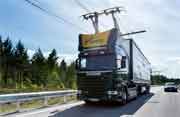| |
|
| |
|
 |
Supply
Chain by the Numbers |
| |
|
| |
- June 30, 2016 -
|
| |
|
| |
|
| |
|
| |
New Panama Canal Finally Opens; 3D Printing Losing Some Steam; Walmart Continues to Expand Its dot com Business, but is it Enough? Sweden Testing Electric Highway for Trucks |
| |
|
| |
| |
| |
|
10 Million
|
|
That is how many products that are now available through the Walmart.com web site, according to company executives this week. That number has been rising over time, as Walmart expands its "marketplace" type program, in which other retailers sell their goods through the Walmart website. While that 10 million is many multiples of the 120,000 or so SKUs carried in an average Walmart superstore, it still pales in comparison to the hundreds of millions of products Amazon carriers on its web site. Another difference for now at least is that all third party vendors on the Walmart site must do their own order fulfillment, whereas Amazon offers its "Fulfilled by Amazon" third-party service. This news as Walmart announced it was expanding the availability of Shipping Pass program, which offers free two-day shipping, to all customers. Until now, the program – which costs $49 versus the $99 for Amazon Prime – was only offered to select customers. How will all the free shipping impact the bottom line? Not positively, as Amazon's experience shows. |
| |
| |
|
| |
| |
2 |
 |
That's the number of kilometers along a stretch of the E16 highway in Sweden that have been "electrified" to enable a new breed of hybrid truck to be powered by an overhead system, similar to how electric trolleys have been running for years. The overhead system was developed by industrial giant Siemens, and will be tested using trucks built by a company called Scania. During the two-year trial, Sweden transport officials will study whether the system is suitable for future long-term commercial use and further deployment. The goal of course is to reduce CO2 emissions created by freight transport. The core of the system is an intelligent pantograph - a jointed framework conveying a current to an electric vehicle from overhead wires - combined with a hybrid drive system on the trucks. A sensor system enables the pantograph to connect to and disconnect from the overhead line at speeds of up to 55 mph. The hybrid system allows the vehicle to also operate outside of the contact line, allowing for the same flexibility as conventional trucks. The system may work, but the approach would require a beyond huge investment in infrastructure to deploy. |
| |
| |
|
|
|
| |
 |
 |
| |
|
|
| |